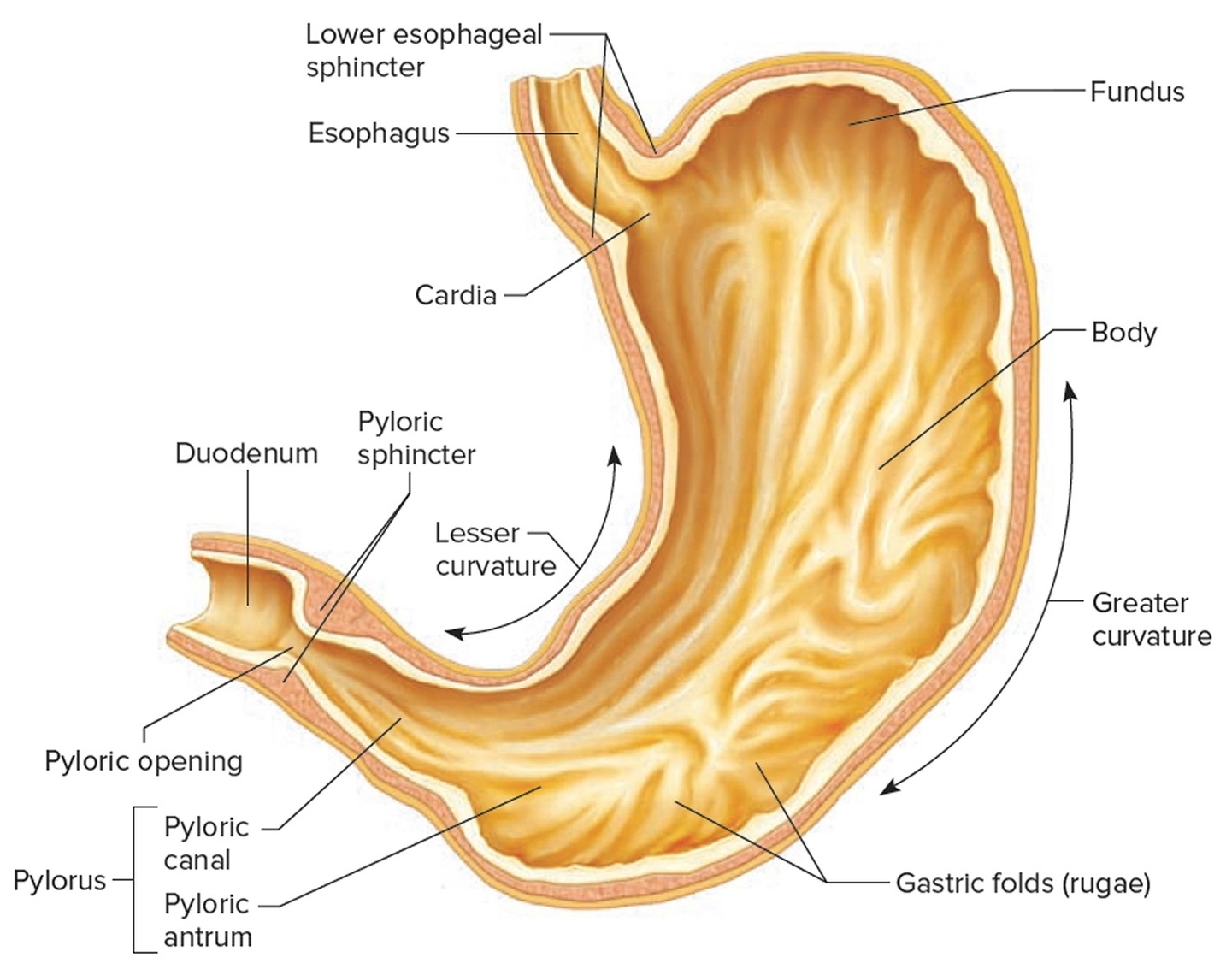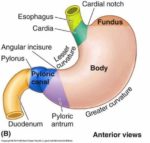The stomach is a vital organ in the digestive system, responsible for breaking down food and sending it to the small intestine. It is located in the upper abdomen on the left side of the body. The stomach is divided into five distinct sections, each with its own function:
1. Cardia: The top part of the stomach, containing the cardiac sphincter, which prevents food from traveling back up the esophagus.
2. Fundus: A rounded section next to the cardia, located below the diaphragm.
3. Body: The central and largest portion of the stomach.
4. Antrum: The lowermost, somewhat funnel-shaped portion of the stomach.
5. Pylorus: A narrowing where the stomach joins the small intestine.
The stomach’s primary function is to digest food and send it to the small intestine. It temporarily stores food, contracts and relaxes to mix and break down food, and produces enzymes and other specialized cells to digest food.
The stomach works in conjunction with the rest of the gastrointestinal (GI) tract. Each part of the GI tract breaks down food and liquid and carries it through the body. During the digestive process, the body absorbs nutrients and water, and then expels the waste products of digestion through the large intestine.
The stomach can be functionally divided into proximal and distal motor pumps, which store food content and pump chyme along the conduit, respectively. Portions of chyme are passed into the pylorus and into the small intestines.
The stomach’s anatomy is quite complex; it consists of four parts, two curvatures, and receives its blood supply mainly from the celiac trunk. Innervation is provided via the vagus nerves and the celiac plexus. Thanks to the stomach, every human is technically capable of corroding metal and picking up new hobbies, such as competitive eating. These are possible due to the extremely potent hydrochloric acid and the expandable nature of this organ.
In conclusion, the stomach plays a crucial role in the digestive system. Its various parts work together to break down food, absorb nutrients, and expel waste, ensuring the body gets the nutrients it needs to function properly..


